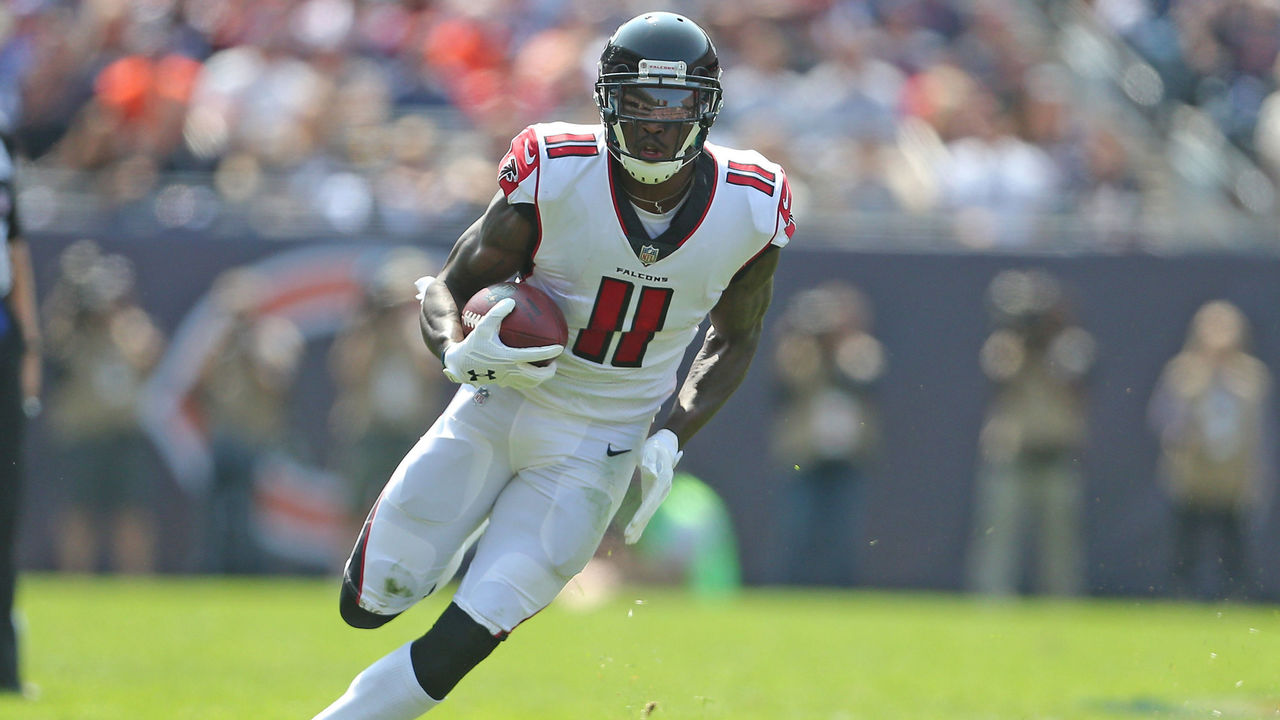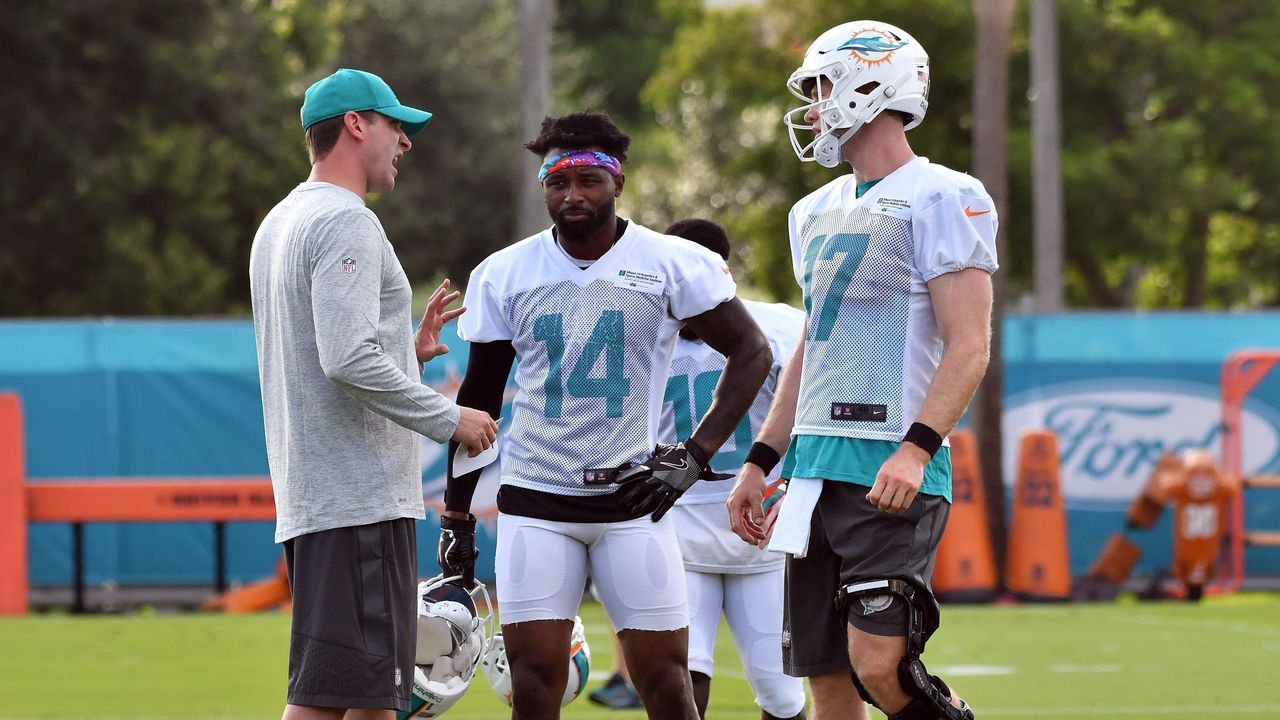Why tagging Jarvis Landry makes little sense for Dolphins
The Miami Dolphins aren't exactly master tacticians when it comes to planning their moves, but slapping Jarvis Landry with the $16.2-million franchise tag Tuesday is one of Miami's all-time head-scratchers.
On the face of it, the move makes sense for both parties: The Dolphins now have the time to negotiate with the receiver who led the league in catches last season, and Landry gets a massive one-year pay bump.
But, when you begin to dig deeper, the lack of logic behind the move becomes startlingly clear.
Landry is no Julio, OBJ, or Brown

Landry isn't a top-tier receiver like his reception numbers suggest. Far from it, in fact.
Leading the league in catches is a solid achievement, but we judge the position for what they do with those touches.
Landry caught 112 passes but somehow failed to eclipse 1,000 yards, averaging 8.8 yards per catch. That puts him 108th in YPC average among qualified receivers (including running backs and tight ends), according to ESPN.
The walking corpse that is Jason Witten ranked 107th. The likes of San Francisco 49ers fullback Kyle Juszczyk and Landry's teammate Julius Thomas averaged more YPC than he did.
YPC certainly isn't everything, and Landry did post a career-high 12.1 YPC in 2016, but that's likely his ceiling (and would've still only put him 56th this season). He's a strong slot player that relies on producing yards after the catch and provides little to nothing in the deep passing game.
Landry is now the second-highest paid receiver in the NFL, in front of DeAndre Hopkins and behind Antonio Brown for 2018. The latter two are unquestionably better players, and an important part of that is both provide well-rounded options for their respective offenses. Brown - who was 16th in YPC - has the speed and the separation skills to consistently make game-changing deep-ball plays, while Hopkins - 26th in YPC - is the best receiver in the league in contested or sideline catches.
Not only is Landry not on their level, he isn't even playing the same game.
Some argue that Landry's strange production is simply a product of the Dolphins' limited passing game, especially with Jay Cutler and not Ryan Tannehill under center in 2017. But slot players all around the league excel with subpar quarterbacks. A 34-year-old Larry Fitzgerald played with Drew Stanton and Blaine Gabbert for more than half the season and still averaged two more yards per catch than Landry, who's nine years his senior.
Landry clearly isn't an elite player, but the strangest part of this whole move for Miami was that it appeared they realized this.
Dolphins created little negotiation leverage

The Dolphins balked at the offer from Landry's camp over a contract worth $14.5 million per season, according to Armando Salguero of the Miami Herald. So, why would a team so far away from competing for a championship decide to keep a replaceable receiver on a one-year deal that far exceeds its top financial evaluation of him?
It's not like Miami are flush with cap space, either. If the Dolphins make logical veteran cuts to the roster, they should have just over $30 million in cap space. Landry will account for over half of that if he signs the tender and doesn't agree to a long-term deal that would reduce the massive 2018 cap hit.
For a roster that needs so much work, it's insanity to use half the cap space on a scheme-reliant receiver like Landry. It's also terrible business.
If the Dolphins' plan is to re-sign Landry, then it's fair to assume they want to at a lesser price than the reported $14.5 million yearly salary the receiver asked for. The problem for Miami is Landry's worth is now set at $16 million per season thanks to the franchise tag.
Usually, the tag helps teams by giving them an affordable (but inflexible and slightly above market value) leverage amount to work from, and players accept a lesser yearly average than the tag in exchange for long-term security.
But there are limits to what a player will accept. The tag doesn't work if the team is hoping to force the player into what they believe is his true value. Landry's $14.5 million might have been a doable figure under the tag, but if the Dolphins were OK with paying him around that, why not just get the deal done months ago and stop the constant back and forth in the media between the two parties?
If getting him to agree to a cheaper deal was the goal, the smarter move would have been to let him test the open market and hope it would be more tepid than expected. Stranger things have happened, and, as illustrated, Landry might be more valuable to Miami than any other team.
Finding adequate trade value will be near impossible

A theory gaining traction behind the move is that Miami will try to tag-and-trade Landry, an attempt to recoup some value for him rather than losing the wideout to free agency in less than a month.
A source told Pro Football Talk's Mike Florio that "the quick tag is being interpreted as a desire by the Dolphins to trade Landry."
Again, the logic makes sense until you look a little closer.
First, Landry needs to cooperate. A trade can't happen until he signs, and he's built a reputation as somewhat of a diva in Miami, openly calling out the team for being "disrespectful" in contract negotiations and occasionally clashing with coaches. Plus, Landry will likely be rooting for the Dolphins to rescind the tag so he can test free agency.
Secondly, even if Landry signs his tender, how many teams will be lining up to trade high draft picks and cough up a four-year, $58-million contract for a good slot receiver? Why not pursue Allen Robinson or Sammy Watkins for a lesser yearly price without giving up any other resources?
Getting true value for Landry in a tough market would be hard for any team, and the Dolphins' front office has shown they aren't exactly savvy negotiators.
Trading Landry could ultimately prove to be a smart move if Miami can ship him to a cap- and pick-rich team like the Cleveland Browns or the San Francisco 49ers and get a return equal to the compensatory 2019 pick they would have received if they allowed him to leave in free agency.
But it's also extremely risky. Trade negotiations break down all the time. Teams have second thoughts or a better alternative arises. If the Dolphins did this to trade Landry, the worst-case scenario is they're stuck with an unhappy slot receiver making $16 million on a team with little chance of competing in 2018.
(Photo courtesy: Action Images)
HEADLINES
- Kerr: Timeout blowup with Draymond 'not my finest hour'
- Harbaugh: Relationship with Lamar 'A-plus' amid reported tension
- Kittle uncertain to play vs. Bears after missing Wednesday's practice
- Watt returns to practice 2 weeks after lung surgery
- Former NBA 2nd-round pick Nnaji joins Baylor with immediate eligibility